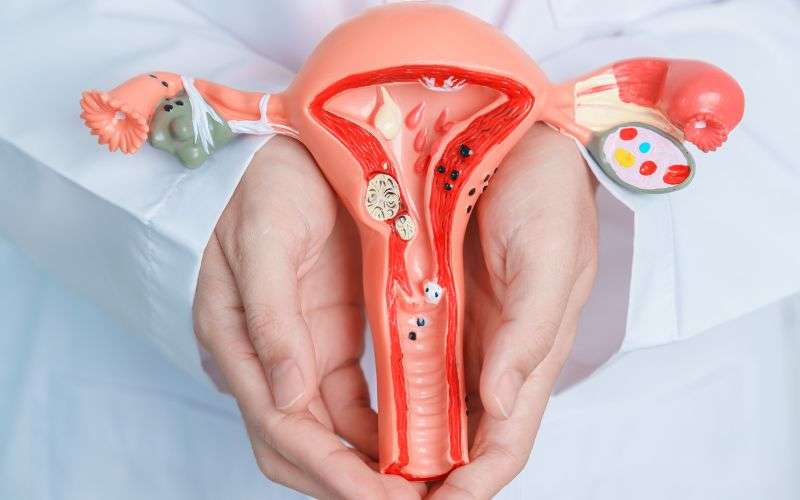Laparoscopic Hysterectomy Surgery

Welcome to Mom and More Clinic, where compassionate care meets medical excellence. Dr. Yasmin Imdad, a renowned gynecologist in Bangalore, specializes in laparoscopic hysterectomy surgery. This minimally invasive procedure offers a safe and effective solution for women experiencing various gynecological issues.
Understanding Laparoscopic Hysterectomy Surgery
Laparoscopic hysterectomy surgery is a procedure where the uterus is removed using minimally invasive techniques. Unlike traditional open surgery, this method involves small incisions, resulting in faster recovery times and less postoperative discomfort. Dr. Yasmin Imdad and her team utilize state-of-the-art equipment to ensure precision and safety during the procedure.
Benefits of Laparoscopic Hysterectomy Surgery
There are several reasons why laparoscopic hysterectomy surgery is preferred over traditional methods:
Minimally Invasive: One of the most significant advantages of laparoscopic hysterectomy surgery is that it is minimally invasive. This means that the surgery is performed through a few small incisions rather than a large abdominal cut. Smaller incisions lead to less scarring, which is cosmetically more appealing and can boost a patient’s confidence post-surgery.
Faster Recovery: The recovery period following a laparoscopic hysterectomy is typically much shorter than that of a traditional open surgery. Patients usually experience a shorter hospital stay, often being discharged within 24 to 48 hours after the procedure. This quicker discharge is beneficial not only for the patient’s comfort but also for reducing hospital-related expenses.
Lower Risk of Infection: The smaller surgical sites used in laparoscopic hysterectomy reduce the risk of postoperative infections. With traditional open surgery, the larger incision increases the risk of bacteria entering the wound, which can lead to complications. Minimally invasive techniques involve fewer and smaller incisions, thereby minimizing the exposure of internal tissues to potential contaminants. This reduction in infection risk can lead to a safer overall procedure and a smoother recovery process.
Precision: Laparoscopic surgery employs advanced instruments and a laparoscope, which is a small camera that provides a magnified view of the internal organs. This enhanced visibility allows surgeons to perform the procedure with greater precision and control. The ability to see the surgical area in high detail helps in accurately targeting and removing the uterus while minimizing damage to surrounding tissues. The precision of laparoscopic instruments also reduces the likelihood of surgical complications, such as excessive bleeding or inadvertent injury to adjacent organs.

Conditions Treated with Laparoscopic Hysterectomy
Laparoscopic hysterectomy surgery can address a variety of gynecological conditions, including:
- Fibroids: These are non-cancerous growths in the uterus that can cause heavy menstrual bleeding, pelvic pain, and pressure on the bladder or bowel. Removing the uterus can relieve these symptoms and prevent future growths.
- Endometriosis: This condition occurs when tissue similar to the lining inside the uterus (endometrium) grows outside the uterus, causing pain, heavy periods, and infertility. Laparoscopic hysterectomy can provide relief from chronic pain and other symptoms by removing the uterus and endometrial tissue.
- Uterine Prolapse: Uterine prolapse happens when the uterus descends into or outside the vaginal canal due to weakened pelvic muscles and ligaments. This can cause urinary issues, pelvic pressure, and difficulty with bowel movements. A laparoscopic hysterectomy can correct the prolapse and alleviate associated symptoms.
- Chronic Pelvic Pain: Persistent pelvic pain can be caused by various underlying gynecological issues, including adenomyosis, fibroids, and endometriosis. When other treatments have failed, a laparoscopic hysterectomy may be recommended to remove the source of the pain and improve the patient’s quality of life.
- Cancer: Early-stage cancers of the uterus, cervix, or ovaries may necessitate a hysterectomy to remove cancerous tissues and prevent the spread of the disease. Laparoscopic hysterectomy offers a less invasive option with a shorter recovery time compared to traditional surgery.
The Procedure: What to Expect
Dr. Yasmin Imdad and her experienced surgical team follow a meticulous approach to laparoscopic hysterectomy surgery:
- Preoperative Consultation: Comprehensive evaluation and discussion of the patient’s medical history and treatment options.
- Anesthesia: Administering general anesthesia to ensure the patient is comfortable and pain-free during the procedure.
- Surgery: Making small incisions in the abdomen to insert a laparoscope (a small camera) and specialized surgical instruments.
- Removal of the Uterus: Carefully detaching and removing the uterus through the small incisions.
- Closure: Suturing the incisions and applying sterile dressings.
Postoperative Care and Recovery
After laparoscopic hysterectomy surgery, patients can expect:
- Short Hospital Stay: Most patients are discharged within 24-48 hours.
- Minimal Discomfort: Over-the-counter pain relievers are usually sufficient to manage postoperative pain.
- Quick Recovery: Patients can typically return to normal activities within 2-4 weeks.
- Follow-Up Appointments: Regular check-ups to monitor the healing process and address any concerns.

Tips for a Smooth Recovery
- Follow Doctor’s Instructions: Adhering to post-surgery guidelines is crucial for a smooth recovery.
- Stay Active: Gentle activities like walking can promote healing and prevent complications.
- Healthy Diet: Eating a balanced diet rich in vitamins and minerals can aid the recovery process.
- Monitor Symptoms: Report any unusual symptoms like severe pain or heavy bleeding to your doctor immediately.
Contact Dr. Yasmin Imdad
If you are considering laparoscopic hysterectomy surgery, Dr. Yasmin Imdad at Mom and More Clinic is here to help. With extensive experience and a patient-centered approach, Dr. Yasmin ensures the highest standard of care.
Frequently Asked Questions (FAQs)
Laparoscopic hysterectomy surgery is a minimally invasive procedure to remove the uterus using small incisions, resulting in faster recovery and less discomfort compared to traditional open surgery.
The benefits include smaller incisions, faster recovery, lower risk of infection, and greater precision during surgery.
This surgery can treat fibroids, endometriosis, uterine prolapse, chronic pelvic pain, and early-stage uterine, cervical, or ovarian cancer.
The procedure involves a preoperative consultation, general anesthesia, small abdominal incisions, removal of the uterus, and closure of the incisions with sutures.
Most patients are discharged within 24-48 hours, with minimal discomfort and a typical return to normal activities within 2-4 weeks.